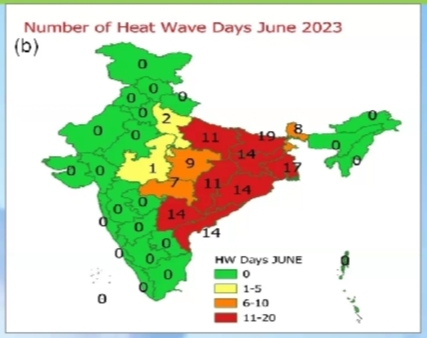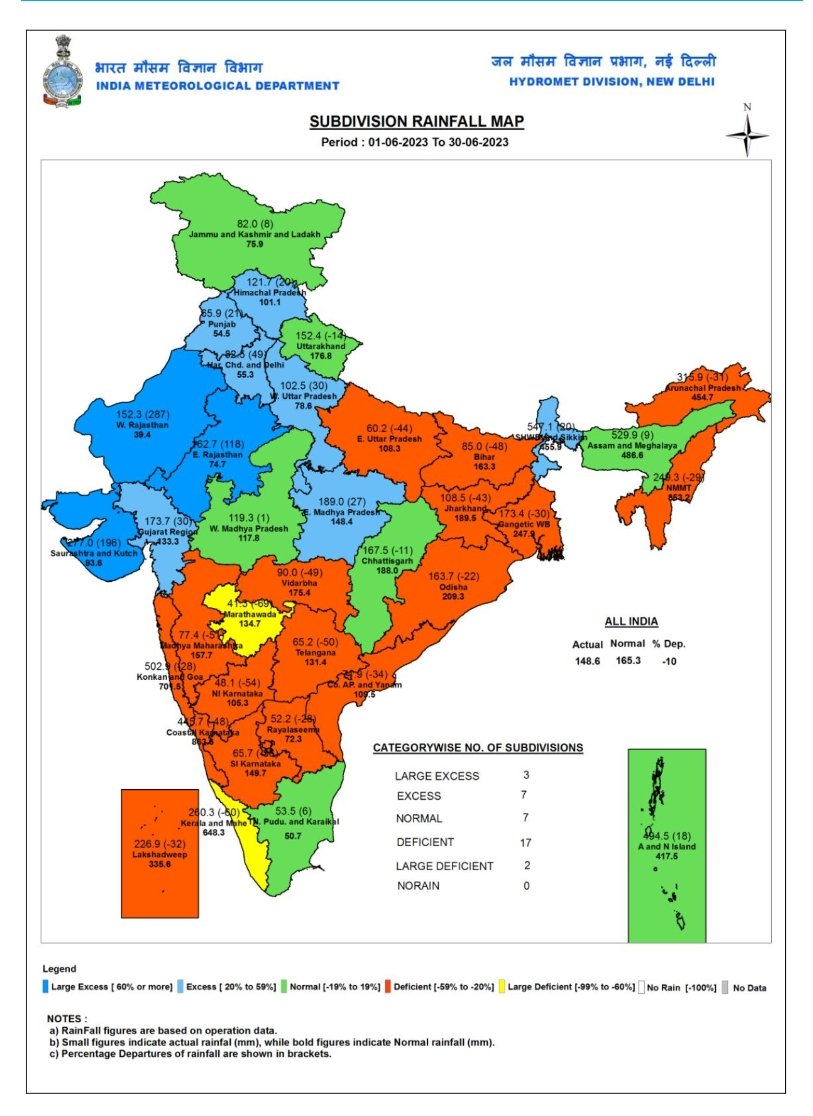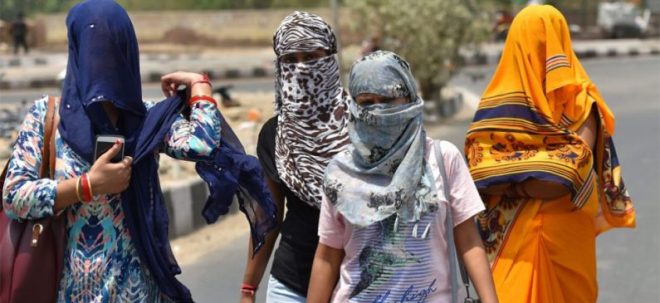Bihar sweltered through the heatwaves for nearly 19 days in June, followed by West Bengal which recorded 17 such days. The blistering heat conditions continued for more than 14 days over Jharkhand, Odisha and coastal Andhra Pradesh, and more than 11 days in eastern Uttar Pradesh
Despite the onset of monsoon rains, intense and prolonged heat waves scorched major parts of India in June, with states like Bihar and West Bengal bearing its brunt for nearly 19 days. Temperatures climbed to 43℃ and settled there for days, fuelling dangerous heat and humidity across the region.
Read More: Joshimath Sinking: 6-Feet Deep Hole in Field Amid Monsoon Rain Sparks Panic
“The heatwaves followed a pattern this year and struck the eastern states much harder. The maximum temperatures surged way past normal. They were beyond 6-8℃ above normal for several days. The heatwave conditions were continuous, with no breaks in between,” said India Meteorological Department (IMD) chief Dr M Mohapatra.
The heatwave days were far above normal in West Bengal, Odisha, Bihar, Jharkhand, Chhattisgarh and parts of Andhra Pradesh, Telangana, eastern Madhya Pradesh and parts of Vidarbha in Maharashtra in June. The monsoon onset, too, was delayed over Maharashtra by nearly two weeks and had a subdued progress over the eastern states, except the Northeast where it caused extremely heavy rains.
Read More: Elon Musk Decides Number Of Tweets You Can See A Day, CEO Is Silent
Bihar sweltered through the heatwaves for nearly 19 days in June, followed by West Bengal which recorded 17 such days. The blistering heat conditions continued for more than 14 days over Jharkhand, Odisha and coastal Andhra Pradesh, and more than 11 days in eastern Uttar Pradesh.

“India passed through an intense severe weather this June. There was a cyclone along the west coast, then prolonged heat waves in eastern states and then intense heavy rainfall causing deluge in the east,” said Mohapatra.
IMD declares a heatwave if the maximum temperature crosses 40℃ or more for plains and 37℃ or more for coastal areas in two weather stations in a meteorological station for at least two consecutive days.
Read More: ‘Drone’ spotted over PM Modi’s residence, cops say nothing suspicious found
Bihar and West Bengal have been among the worst-hit. The two states recorded intense heatwave conditions for almost nine days in April, seven in May and more than 19 in June. The monsoon rains, too, were below-normal for most part of June with large areas parched.

With the world already 1.1℃ warmer than pre-industrial levels, extreme weather events have increased, both in terms of intensity and frequency. Heatwaves, which have often been called silent killers because of their impact on health, have become longer and more severe. In India, they are now impacting a larger area than before, show studies.
Read More: PM Modi to Chair SCO Summit 2023 Tomorrow, Putin, Xi Jinping to Participate
In its monthly weather report released recently, the Met Office stated that the summer of 2023 had the third-highest heat wave days in last 13 years, after 2019 and 2022. While 2019 recorded as many as 578 met subdivision days (MSD) of heatwave during March-June, there were 455 days in 2022, which also saw one of the hottest March months on record. This year, there have been 218 such days from March to June across states.
The met-subdivision days (MSD) is a metric used by the IMD to quantify the heatwave conditions over the region. If a meteorological sub-division records heatwave on a day, it is counted as one MSD. June had 139 such days, mostly recorded in the eastern states of Bihar, West Bengal, Jharkhand, Odisha, eastern Uttar Pradesh, Chhattisgarh and Andhra Pradesh.
Scientists say the risk of heatwaves is projected to increase ten-fold this century, with more than 70% of the land area in India expected to be hit by heat waves with a high magnitude.





































